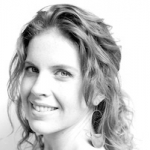Enough with the Tea Already
Posted by Jul 27, 2017

Lauren Slone
This post is part of our Excellence and Equity in Arts for Change blog salon.
While some know my artist and admin “sides,” fewer people know that from 2000 to 2006 I studied many different languages, cultural practices, and mythologies with the hopes of becoming a professor of comparative religion and philosophy. At the time, my mentor (a biblical scholar) spoke often about:
- The spectrums of interpretive possibility within a single word
- How those who define image, movement, and text within any society have tremendous power
- How translations of text have been used to enforce behavior (standards which change over time depending on who has the power to translate)
- How important it is (he pointed at me) to reject interpretations that exclude contrasting perspectives or prohibit multiplicity
Nearly a decade later as the MAP Fund Program Manager, I think about the same concerns:
- The spectrums of interpretive possibility within MAP’s words (funding guidelines, the application, my emails to artists, etc.)
- The power we hold as staff, reviewers, and panelists to interpret MAP’s funding guidelines and distribute resources
- How MAP is accountable to others in asserting equitable practices, even as a shared set of values, goals, and definitions for equity has yet to cohere across the wider performance sector
- How important it is that MAP supports more interpretations of what it means to undergo deep inquiry as an artist, and what it means to challenge social and cultural hierarchies in America today
When I studied with my mentor, it was not long after 9/11 and the interpretation of words (The U.S. Constitution, the Bible, the Qu’ran, news articles) had dire consequences. I’m grateful that the funding criteria that we use at MAP have amassed nearly 30 years of evolving language, which is directly tied to what artists are making, and the challenging contexts that many of them are continuing to work in.
You can see these considerations come into play each year when we host a live panel. We hire a rotating cohort of colleagues to interpret MAP’s guidelines in relation to that cycle’s particular applicant pool, and to make final funding recommendations. While we want panelists to be passionate advocates for artists and share their unique perspectives, the problem is that those preferences can block their ability to support artistic work that is not reflective of their tastes, expertise, and cultural biases.
With this in mind, we experimented with bringing a new tool into the room: Aesthetic Perspectives: Attributes of Excellence in Arts for Change (per the generous permission of Animating Democracy). It offers up 11 attributes of artwork that make the purview of excellence not limited to only those that represent Western European aesthetics.
We read the framework, and thought, “What if we brought it into the panel room as a more articulate and expansive way to talk about art?” I knew as the moderator that I needed to internalize the attributes prior to the convening, and I wanted to call upon them in responsive ways (which is part of the beautiful intentions for their usage), or perhaps, not at all if I found that they wouldn’t have been helpful to this particular group of panelists.
As the panel began, I learned that bringing the attributes in at key moments created momentum in the conversation, and more importantly, increased the number of ways the panelists saw synergies between the artists’ work and MAP’s guidelines.
I listened for what is often called “cup of tea,” or when a panelist describes what they like or dislike without providing analysis. The attributes allowed me to say, “I’m hearing that you saw evidence of deep inquiry in the work samples. It sounds like you found the narrative structure challenging. What if I asked you to consider coherence? To what extent is there a clear artistic point of view or a clear relationship among multiple artistic perspectives?” Using this strategy, the panelist became more aware of their ”tea” and how that blocked evidence of seeing MAP’s funding criteria in the applicants’ writing style.
When I sensed that more wanted to be said about the project or MAP’s funding criteria but no one was initiating, I quickly picked an attribute and one of the questions the framework offers, which was relevant to the specific proposal under consideration: “In thinking about disruption in this proposal, how might the work influence new directions for artistic practice or social action?” This became a great strategy for causing dialogue sparks, particularly if I didn’t have something on the tip of my tongue either.
Sometimes when panelists would get stuck on one aspect of a proposal, or one way of thinking about MAP’s guidelines without attending to any other possibilities, I was able to interject, “I’m hearing that you see evidence of deep inquiry in the process of making the project. Are there other ways that the project embodies deep inquiry? Let’s look at the attribute of openness.”
In order to create systemic change, it’s not about slightly reframing word choices. The framework offers a bold new lexicon that greatly improves upon what is often dismissive language used by gatekeepers to assert one dominant aesthetic approach above others.
Given how helpful the framework was in panel, we’re planning to integrate it more widely throughout our program in 2018. I’d be curious to hear other ideas for dealing with issues of interpretation and panel bias. Comment here and write to me at [email protected].





